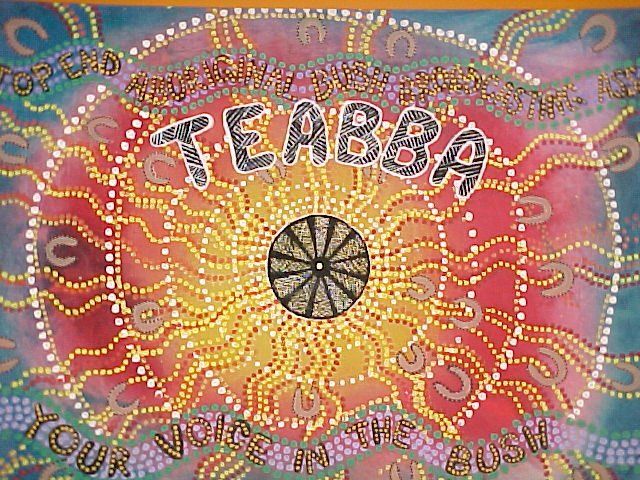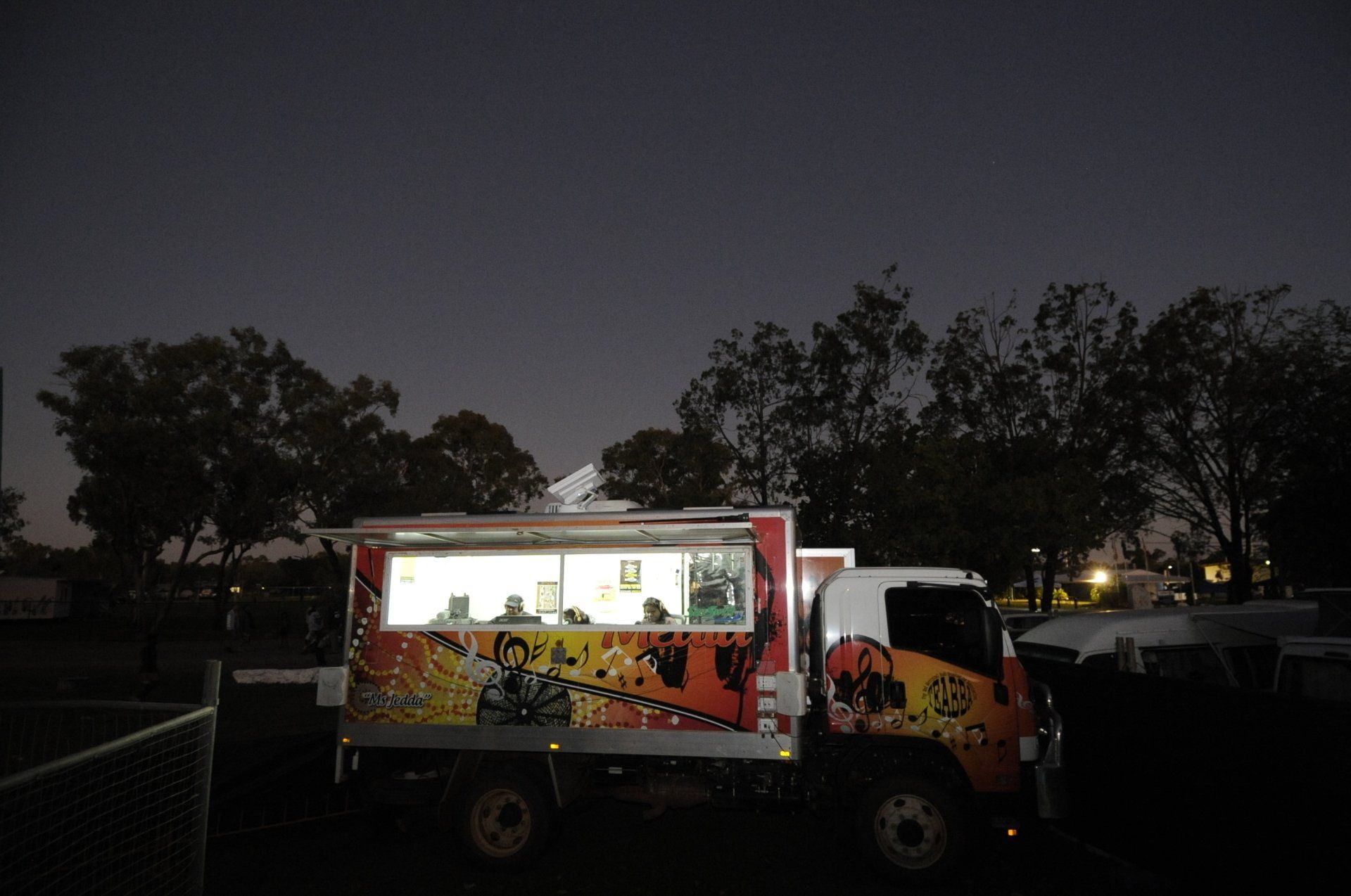About Us
About
The Top End Aboriginal Bush Broadcasting Association – TEABBA – was formed by Top End community members who recognised the need to encourage and assist the development of local broadcasting and information services at all remote communities, using the newly installed broadcasting equipment provided by the government under the BRACS (Broadcasting Remote Aboriginal Community Scheme) project. Today ‘BRACS’ are known as ‘RIBS’ (Remote Indigenous Broadcast Service).
It was envisaged the association would also act as the authorised representative and negotiator on behalf of communities with BRACS broadcast installations and other media associations in the Top End. The inaugural meeting was held at Kakadu in June 1989, and from that meeting a committee was elected and a membership set up with representation from all the major communities in the Top End. The association was incorporated on 10 October 1989, under the Aboriginal Councils and Associations Act 1972.
TEABBA, is a non-for-profit Organisation whose project objectives are to provide operational support for the 29 remote Indigenous broadcasting units in Aboriginal communities across the Top End of Australia. These Units are called Remote Indigenous Broadcasting Services (RIBS). These units house radio equipment. These services are available through a satellite system. Most RIBS have an operator who does local radio shows in their community. These shows are often in the local language, relaying community announcements, interviewing visiting Government departments, announcing the weather and involving the school children.
Most of these communities also have the ability to patch into the TEABBA Network allowing the RIBS operator to broadcast to the 29 Remote Communities across the Top End of Australia. These Network shows are hosted in English and local language. Some of these shows are used for National and International distribution.
About
The Top End Aboriginal Bush Broadcasting Association – TEABBA – was formed by Top End community members who recognised the need to encourage and assist the development of local broadcasting and information services at all remote communities, using the newly installed broadcasting equipment provided by the government under the BRACS (Broadcasting Remote Aboriginal Community Scheme) project. Today ‘BRACS’ are known as ‘RIBS’ (Remote Indigenous Broadcast Service).
It was envisaged the association would also act as the authorised representative and negotiator on behalf of communities with BRACS broadcast installations and other media associations in the Top End. The inaugural meeting was held at Kakadu in June 1989, and from that meeting a committee was elected and a membership set up with representation from all the major communities in the Top End. The association was incorporated on 10 October 1989, under the Aboriginal Councils and Associations Act 1972.
TEABBA, is a non-for-profit Organisation whose project objectives are to provide operational support for the 29 remote Indigenous broadcasting units in Aboriginal communities across the Top End of Australia. These Units are called Remote Indigenous Broadcasting Services (RIBS). These units house radio equipment. These services are available through a satellite system. Most RIBS have an operator who does local radio shows in their community. These shows are often in the local language, relaying community announcements, interviewing visiting Government departments, announcing the weather and involving the school children.
Most of these communities also have the ability to patch into the TEABBA Network allowing the RIBS operator to broadcast to the 29 Remote Communities across the Top End of Australia. These Network shows are hosted in English and local language. Some of these shows are used for National and International distribution.
History
TEABBA was incorporated on the 10th October 1989 under the Aboriginal Council and Associations Act (1972). The new association obtained temporary housing for an office and studio at Batchelor township, 100km south of Darwin. Studio equipment was provided by the ABC for use by both TEABBA and students attending Batchelor College and studying the Diploma in Broadcasting and the BRACS certificate course.
Due to the expansion of Batchelor college, TEABBA was forced to seek alternative accommodation and the Board made a decision to move the operation closer to Darwin to give better access to services and organisations wishing to use the radio network. The move was completed in June 1994 and coincided with TEABBA securing access to a spare audio channel on the Imparja satellite transponder for its radio network to cover the Top End of the Northern Territory.
Access to a satellite channel allowed TEABBA to pioneer the regional radio network model of linking BRACS stations to a central hub (using dial up telephone lines at the time), then relaying programs to Alice Springs for up-linking to the satellite, this is now done via IP. This program was received and rebroadcast on FM transmitters at each of the 29 BRACS/RIBS communities in the Top End of the Northern Territory.
TEABBA is a recognised voice within the Indigenous broadcasting sector and continues to play an active role on matters of policy, future direction of community and National Indigenous broadcasting, and actively promotes the development of local broadcasting so that Aboriginal people can gain access to information important to their community and for the maintenance of culture and language. Which also supports broadcaster positions for local people for local jobs.
History
TEABBA was incorporated on the 10th October 1989 under the Aboriginal Council and Associations Act (1972). The new association obtained temporary housing for an office and studio at Batchelor township, 100km south of Darwin. Studio equipment was provided by the ABC for use by both TEABBA and students attending Batchelor College and studying the Diploma in Broadcasting and the BRACS certificate course.
Due to the expansion of Batchelor college, TEABBA was forced to seek alternative accommodation and the Board made a decision to move the operation closer to Darwin to give better access to services and organisations wishing to use the radio network. The move was completed in June 1994 and coincided with TEABBA securing access to a spare audio channel on the Imparja satellite transponder for its radio network to cover the Top End of the Northern Territory.
Access to a satellite channel allowed TEABBA to pioneer the regional radio network model of linking BRACS stations to a central hub (using dial up telephone lines at the time), then relaying programs to Alice Springs for up-linking to the satellite, this is now done via IP. This program was received and rebroadcast on FM transmitters at each of the 29 BRACS/RIBS communities in the Top End of the Northern Territory.
TEABBA is a recognised voice within the Indigenous broadcasting sector and continues to play an active role on matters of policy, future direction of community and National Indigenous broadcasting, and actively promotes the development of local broadcasting so that Aboriginal people can gain access to information important to their community and for the maintenance of culture and language. Which also supports broadcaster positions for local people for local jobs.


